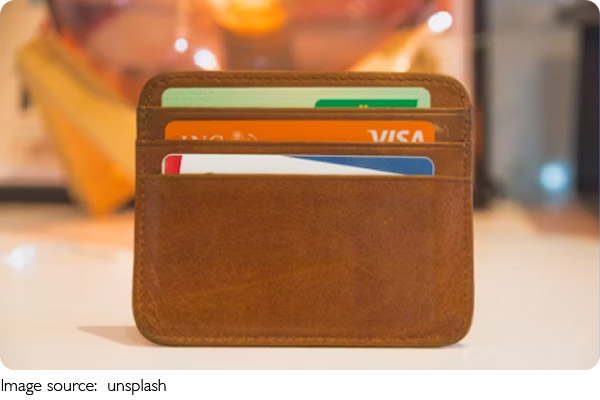Stop Credit Traps

Hey Lykkers! Have you ever swiped your credit card for a shopping spree or an unexpected bill, only to later realize the balance keeps growing, no matter how much you pay? Trust me—you're not alone.
Credit cards can feel like a lifesaver in the moment, but high-interest rates can quickly turn them into a financial trap.
Today, we're going to break down the true cost of high-interest credit cards and show you practical ways to take control before the debt snowballs.
Why High Interest Rates Are a Big Deal
Credit cards come with something called an Annual Percentage Rate (APR). High-interest cards often have APRs between 20% and 30%, which might not sound scary at first. But here's the kicker: interest compounds. That means if you carry a balance and only make minimum payments, your debt can grow much faster than you think.
For example, a $2,000 balance at 25% APR, with just minimum payments, could take years to pay off—and you might end up paying nearly double the original amount in interest alone. It's like a snowball rolling downhill—it starts small but quickly gets out of control.
The Problem With Minimum Payments
Here's a trap many people fall into: making only the minimum payment. Sure, it keeps your account in good standing, but it barely reduces the actual debt.
Example:
- Balance: $5,000
- APR: 24%
- Minimum payment: $125/month
If you pay only $125 each month, it could take over 12 years to pay off the debt, and you'd pay more than $7,000 in interest. That's more than your original purchase!
Extra Costs That Sneak Up on You
High-interest cards often come with hidden fees that make debt worse:
- Annual fees: Some cards charge $95–$550 per year.
- Late payment fees: Missing a payment can cost $25–$40.
- Over-limit fees: Spending past your credit limit adds even more charges.
These fees pile up fast and make it harder to get ahead.
Why Credit Card Debt Feels So Hard
Debt isn't just about money—it's psychological. Studies show that credit card debt increases stress, anxiety, and even affects sleep. The convenience of swiping your card masks the long-term consequences, making it easy to overspend.
How to Take Control of High-Interest Debt
Here are practical steps to prevent your debt from spiraling:
1. Pay in Full Each Month: Avoid interest entirely by paying off the balance in full whenever possible.
2. Look for Lower-Interest Options: Balance transfer cards or personal loans with lower rates can save you money.
3. Use the Avalanche Method: Focus on paying off high-interest cards first while making minimum payments on others.
4. Track Your Spending: Know where your money goes and avoid unnecessary purchases.
5. Consolidate Wisely: Combining multiple balances into a lower-interest loan can simplify repayment.
The Long-Term Impact
High-interest credit card debt doesn't just hurt your wallet—it affects your future:
- Credit Score Damage: High balances and late payments lower your credit score.
- Reduced Savings: Money spent on interest is money you can't save or invest.
- Stress on Mental Health: Constant financial worry can affect your well-being.
Understanding the full cost of high-interest credit cards is the first step toward smarter financial decisions.
According to Jean Chatzky, a personal finance expert, "Understanding how interest compounds and the impact of minimum payments is essential for consumers to take control of their credit card debt."

Final Thoughts for Lykkers
Lykkers, credit cards aren't inherently bad—they're tools. But high-interest cards can turn convenience into a long-term problem if not managed properly. By understanding how interest works, avoiding minimum-only payments, and creating a smart repayment plan, you can take back control of your finances and avoid debt traps.
Remember: awareness is everything. Once you know the numbers, you can make choices that protect your financial future and give you peace of mind.
-
 Flexibility & StrengthTrain Like a Gymnast: Master Flexibility and Strength for Next-Level Performance
Flexibility & StrengthTrain Like a Gymnast: Master Flexibility and Strength for Next-Level Performance -
 Pitcher's Shoulder CareStronger Shoulders, Longer Career: Injury Prevention Tips for Baseball Pitchers
Pitcher's Shoulder CareStronger Shoulders, Longer Career: Injury Prevention Tips for Baseball Pitchers -
 Running Form and Knee HealthProtect Your Knees: Fix Your Running Posture Before Injury Strikes
Running Form and Knee HealthProtect Your Knees: Fix Your Running Posture Before Injury Strikes